I'm a Beauty Editor, and This Is the One Skincare Ingredient I Rely on for Serious Glow

Ask almost anyone what outcome they are hoping to achieve with their skincare routine and there’s usually one word that comes up universally—glow. Yes, we’re all on a quest to achieve that elusive radiance, and there are plenty of skincare tools that can help. Glycolic acid is beloved for its ability to boost luminosity, salicylic acid sloughs away dead skin cells to reveal the brighter skin beneath, and LED face masks and chemical peels are surefire ways to get glowing skin on a bigger budget. However, if you have sensitive skin then lots of these routes to radiance may be a no-go due to the risk of irritation. And if that’s the case then listen up as you’ll want to hear about mandelic acid—the gentle exfoliating acid that experts predict will be everywhere in 2024.

What is mandelic acid and what does it do?
Much like its more popular sibling glycolic, mandelic acid is an alpha hydroxy acid. AHA’s are naturally-occuring acids (mandelic is derived from bitter almonds) that boast exfoliating properties. Unlike glycolic acid, however, mandelic acid is much more gentle in its nature. “Mandelic acid has a large particle size which means it causes less irritation and is gentler to the skin,” explains Dr Sonia Khorana, GP and Dermatology Expert. And the reason that it’s being touted as a great route to brighter skin is thanks to its exfoliating benefits—it sloughs away dead skin cells on the surface to reveal the more radiant, healthy skin beneath.
Without getting too bogged down in the minutiae of the science, there is one unique thing that sets mandelic acid apart from other AHAs—the fact that it becomes oil soluble once it slips beneath the surface of the skin. “AHAs are water soluble [meaning they penetrate through the skin’s natural oils] and can’t sink too far into the skin,” explains Heather Wish, Paula’s Choice Education Manager. “However, with mandelic acid, once it slips below the surface, it morphs and becomes oil soluble which allows for multi-layer results like evening tone, targeting and reducing the look of dark spots, smoothing skin tone and decreasing the look of fine lines and wrinkles.”

What’s the difference between mandelic acid and other AHAs?
While all AHAs can be used to exfoliate the skin and boost brightness, the size of the molecule itself is what differentiates the various chemical exfoliators and will determine which is best for your skin type. “Imagine mandelic acid as a football, lactic acid as a tennis ball, and glycolic acid as a table tennis ball,” explains Wish. The fact that mandelic acid has the largest molecular size of the lineup means that it will penetrate the skin in a slower and gentler manner.
It’s not just sensitive skin types that will benefit from this more slow-paced approach to exfoliation, either. “Mandelic acid is also great for darker skin tones and is well-tolerated in patients of colour as there’s less risk of hyperpigmentation and sensitivity compared to other AHAs like glycolic acid,” points out Dr Sonia.
Plus, the fact that it’s more oil soluble than other AHAs means it makes a great exfoliating acid option for oily or acne-prone skin, as well as sensitive and rosacea-prone skin types.
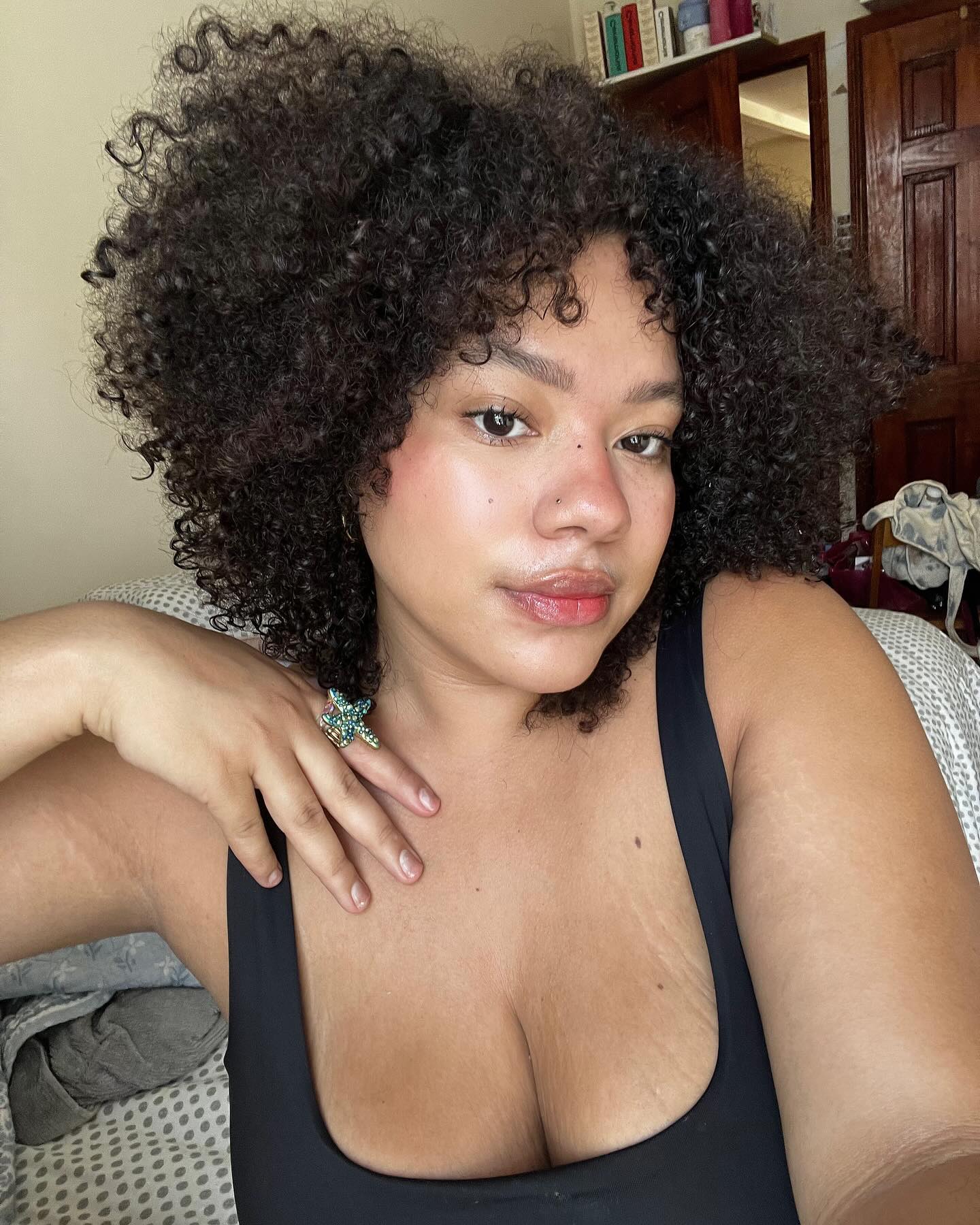
Where does mandelic acid fit in our skincare routine?
When using a new skincare ingredient it’s always important to understand how it fits within your existing skincare routine and the ingredients that it plays nicely with. And while mandelic acid is pretty non-reactive, Dr Sonia does advise that you avoid layering it on with other acids or retinoids—especially if you’re sensitive as it could lead to irritation. “However, mandelic acid is a really good exfoliator for those just beginning to use acids,” says Dr Sonia, so it’s a great entrypoint to the skincare category as a whole.
“If you’re newer to exfoliants or have sensitive skin then begin using it once or twice a week and see how your skin responds”, suggests Wish. Once you’re confident that your skin can tolerate it without any issues then you can work your way up to more frequent use. And if you’re acne-prone and already using something like a salicylic acid or other BHA exfoliator then you could try alternating them.
In terms of the actual application, mandelic acid is still a fairly emerging ingredient in the mass skincare category and we are seeing its inclusion in things like cleansers and serums. However, if you’re using it as a chemical exfoliator then it’s best applied after cleansing and before moisturiser. “Don’t rinse it off and always follow with a sunscreen if you’re using it in the day,” advises Wish.

The pros of using mandelic acid
- It’s gentle so sensitive skin types should tolerate it well.
- Exfoliates and brightens skin.
- More oil soluble than other AHA so good for oily or acne-prone skin.
- Targets dullness, pigmentation and fine lines.
- Great if you’re new to using acids.
The cons of using mandelic acid
- It’s slower-working than other AHAs.
- Need to use it regularly to see results.
- If you already use other acids then you might not find the results as dramatic.
Shop the best mandelic acid skincare products
1. Paula’s Choice 6% Mandelic Acid + 2% Lactic Acid Liquid Exfoliant
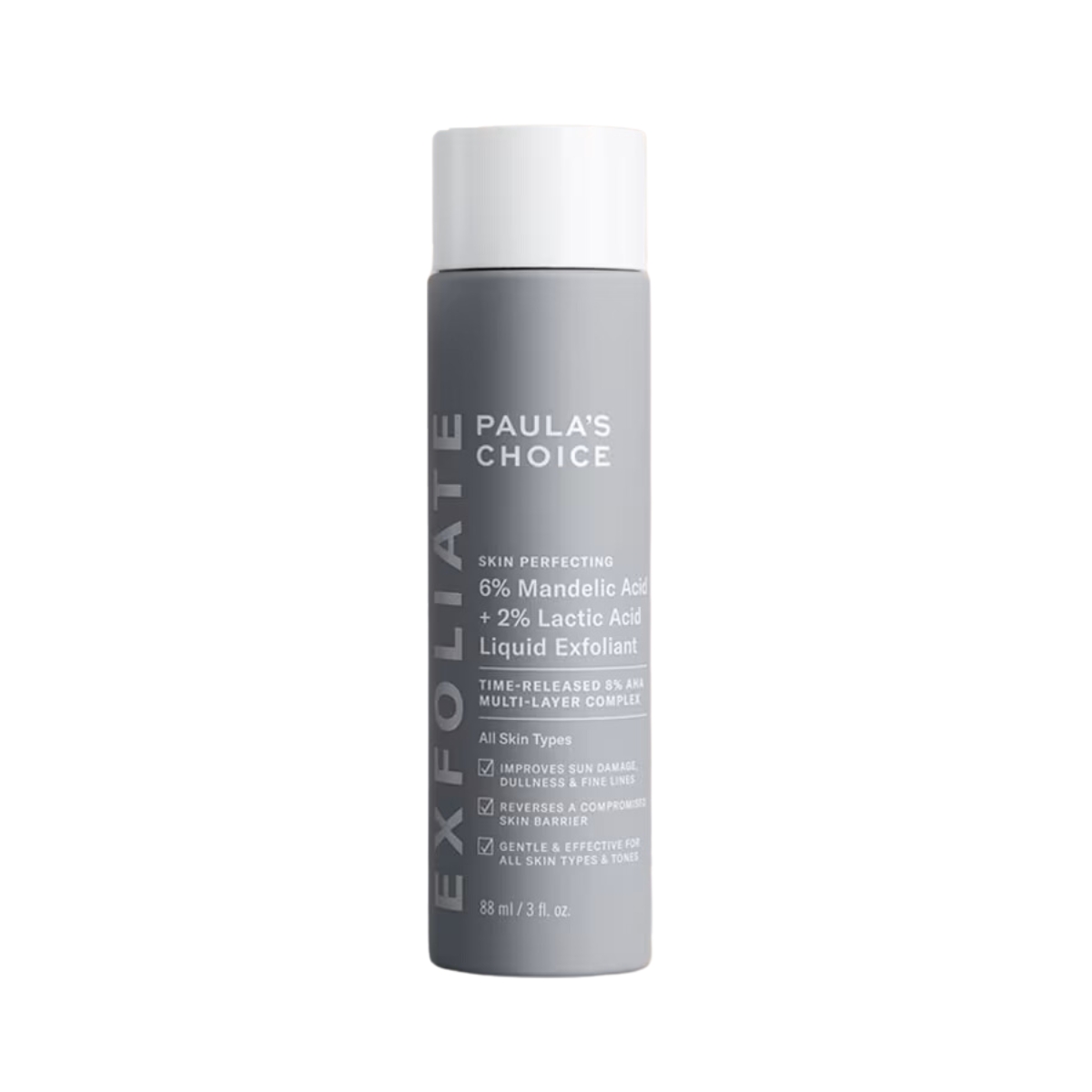
As a huge fan of the iconic Paula’s Choice 2% BHA Liquid Exfoliant, I was really excited to try this new launch from the brand—and it really doesn’t disappoint. I have been using it a few days a week and am incredibly impressed at how soft, bright and healthy my skin looks after just a fortnight of use. Alongside mandelic acid, this gentle toner also contains 2% lactic acid—another mild AHA—which really helps to slow the absorption of the product into the skin. “This significantly minimises the risk of a stinging or burning sensation and has proven to be as gentle as water having been tested on sensitive skin,” explains Wish. If you’re new to the world of chemical exfoliators then this would make the perfect starting point for your journey to glowier skin.
2. Byoma Brightening Toner
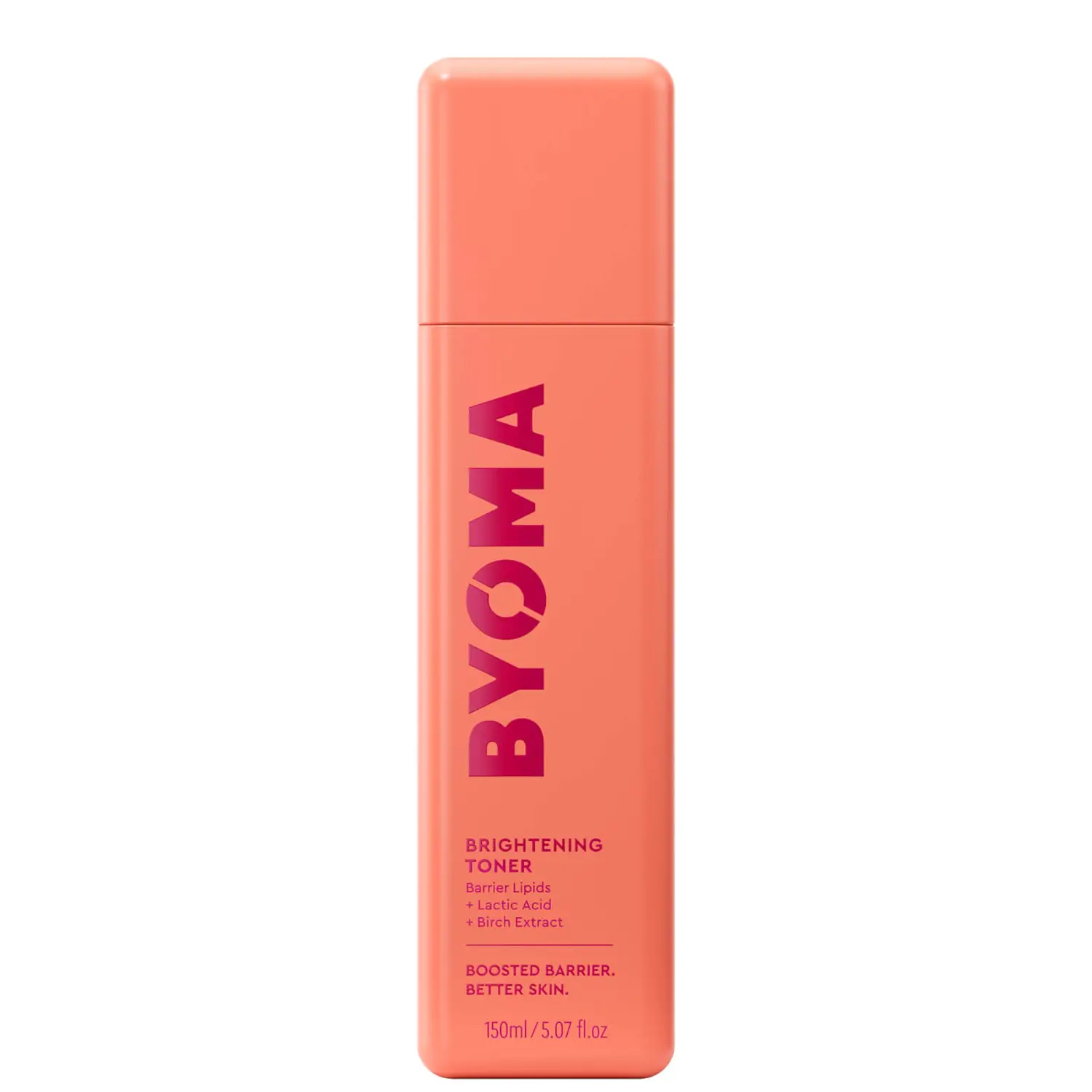
One of the most innovative affordable skincare brands on the market, it’s no surprise that Byoma’s radiance-boosting toner contains a dose of buzzy mandelic acid. All of their formulations are focused on the protection of our skin barrier to encourage healthy skin, so this product is undeniably gentle—aiming to improve the texture and tone of your skin without causing any irritation. Alongside the star ingredient, there’s brightening lactic acid, willow bark extract (a natural form of BHA salicylic acid) to control oil, and a barrier lipid complex to help the skin retain healthy levels of moisture.
3. Allies of Skin Mandelic Pigmentation Corrector Night Serum
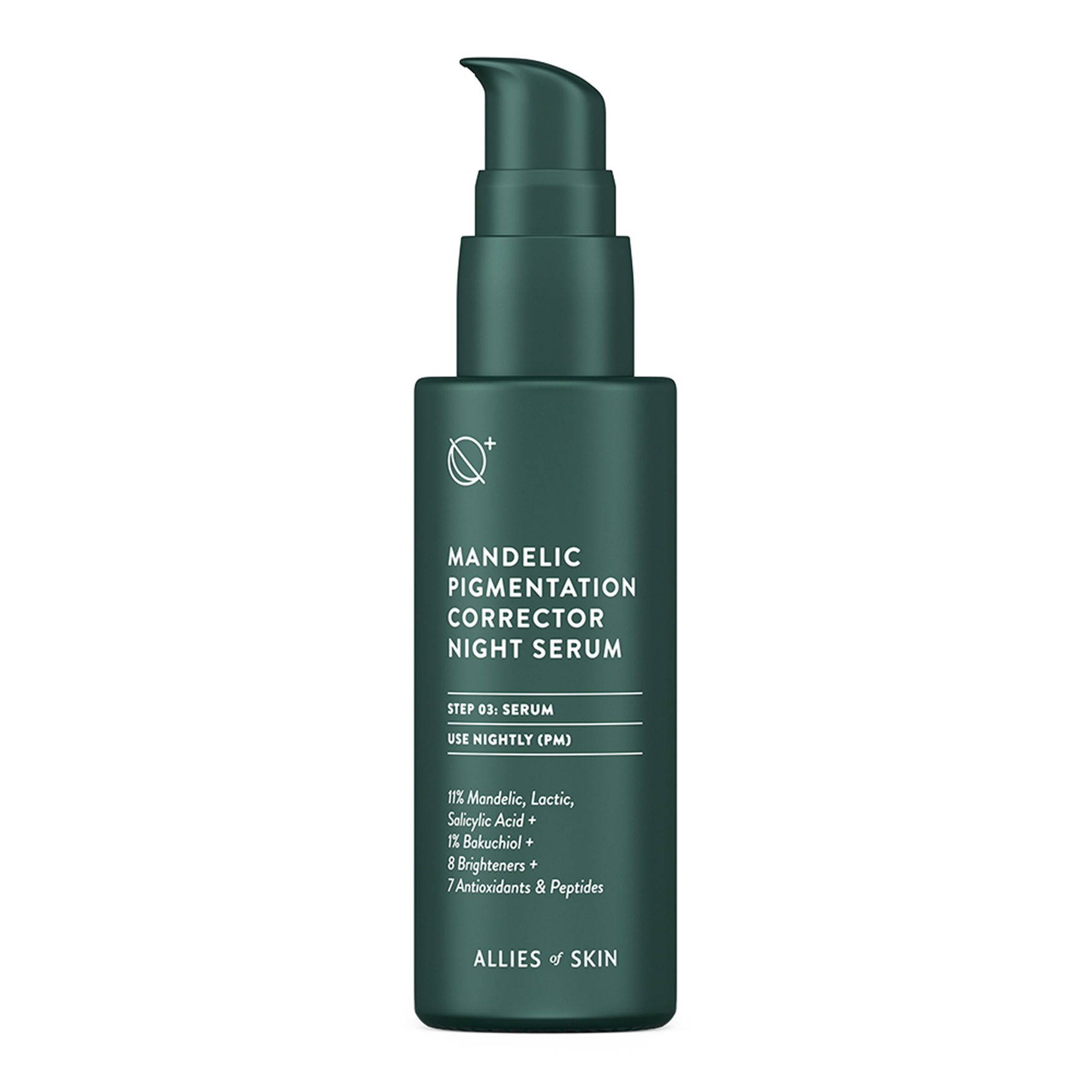
A potent overnight serum that contains 11% mandelic acid, lactic acid, salicylic acid and 1% bakuchiol—a natural alternative to retinol. I’d say that this serum is particularly well-suited to oily or acne-prone skin as it really focus on soothing breakouts, tackling blackheads and minimising the appearance of pores. However, it’s also brimming with hyaluronic acid, peptides and fatty acids so if you are prone to spots but have sensitive skin then I think it would make a great option too. Whenever I use this, my skin always looks so much more calm, fresh and even by morning.
4. Bubble Over Night Hydrating Sleep Mask
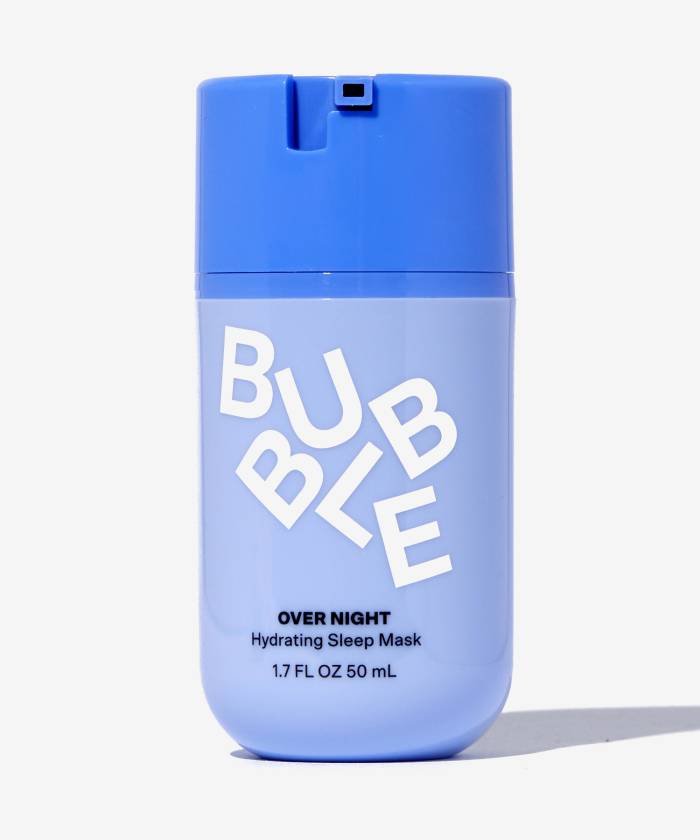
If your skin is feeling irritated, sensitised or inflamed then this deeply nourishing face mask will help to strengthen your skin barrier overnight. The unique formulation almost acts like a moisturising shield over your skin with a healthy dose of arnica helping to ease redness and reduce inflammation. Beneath the surface, mandelic acid and kojic acid get to work gently exfoliating, without exacerbating any existing irritation, so that come morning you’ll have well-rested, glowier, more even skin—and no redness in sight.
5. The Ordinary Mandelic Acid 10% + HA
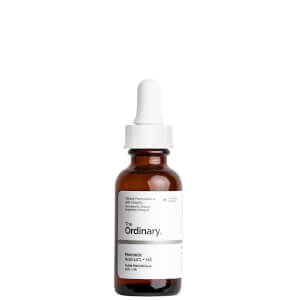
You can always rely on the ordinary to provide no-frills, efficacious formulas that really spotlight a key ingredient, and their mandelic acid exfoliator is no different. The mild formulation dissolves dead skin cells while delivering a dose of hyaluronic acid to the new skin beneath for extra hydration, moisturising comfort, and a plumping effect. Do bear in mind, though, that there is also glycolic acid in this formula which delivers an extra resurfacing boost, but means you may need to use this less frequently at first if you’re new to using exfoliating acids.
6. Soho Skin Liquid Exfoliator
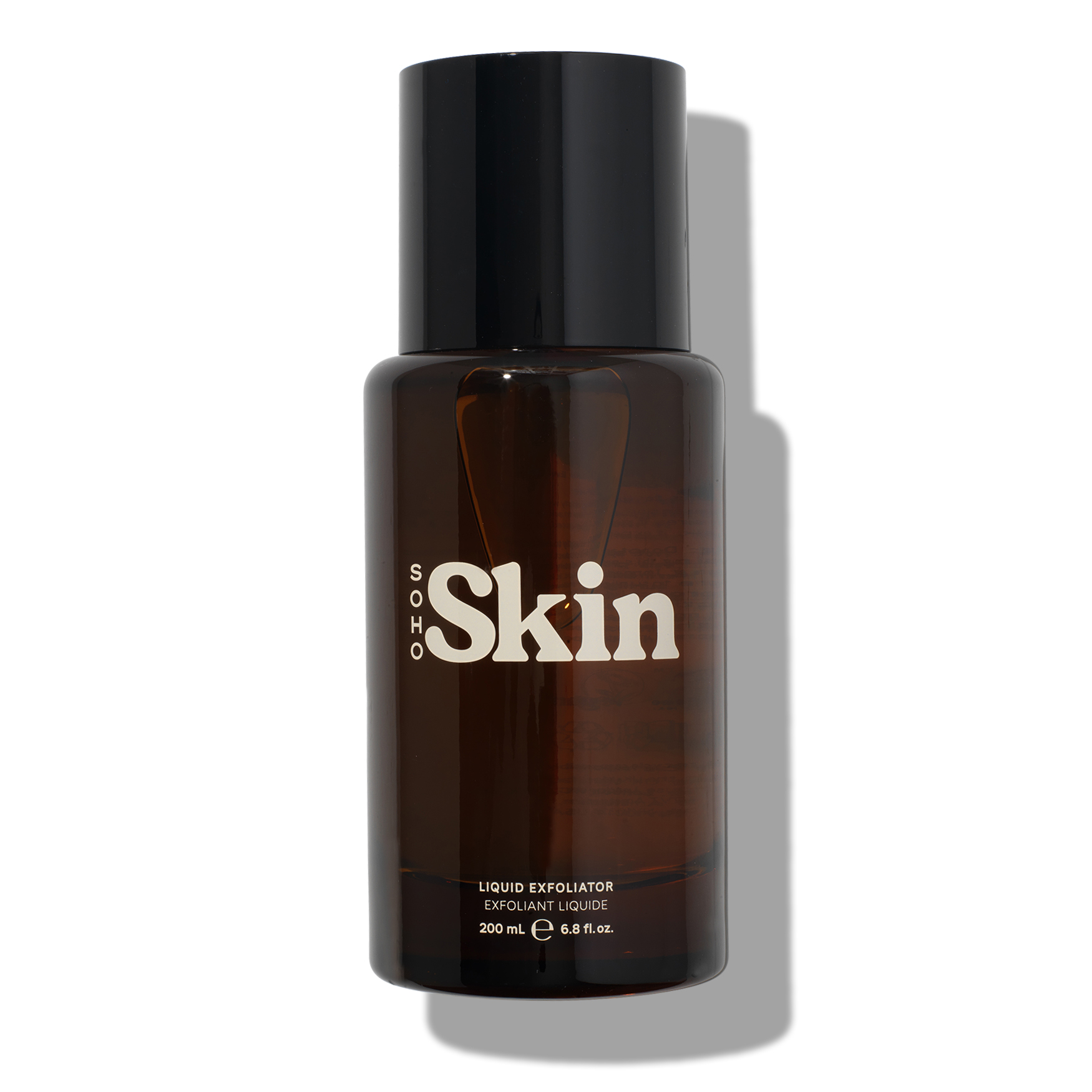
Is this the chicest mandelic acid exfoliator on the market? Undoubtedly. But it isn’t just aesthetically pleasing, this exfoliator does a fantastic job at easing congestion, removing dead skin cells and revealing brighter, smoother, more hydrated skin. For oilier skin types, it works to balance sebum levels so that your skin looks fresh rather than oily, and for sensitive and drier complexions there’s glycogen to encourage the skin’s natural collagen process for plumper, smoother skin. All in all, the result is skin that has so much glow you’ll look like you’ve spent the weekend at Soho Farmhouse.
Up Next: I'm an Esthetician—These Are the Best Skincare Ingredients of All Time.
Mica Ricketts is a freelance beauty editor, copywriter and regular contributor toBest Knockoff Luxury Clothing UK. She also writes for titles including Marie Claire UK, Refinery 29 and Cosmopolitan, and previously worked atBest Knockoff Luxury Clothing UK as Beauty Editor. With experience in both editorial and content management, she also works with beauty brands and small businesses on brand messaging and content strategy. As a busy mum of two, she is passionate about finding efficacious beauty products that can disguise all signs of tiredness with minimal effort.
